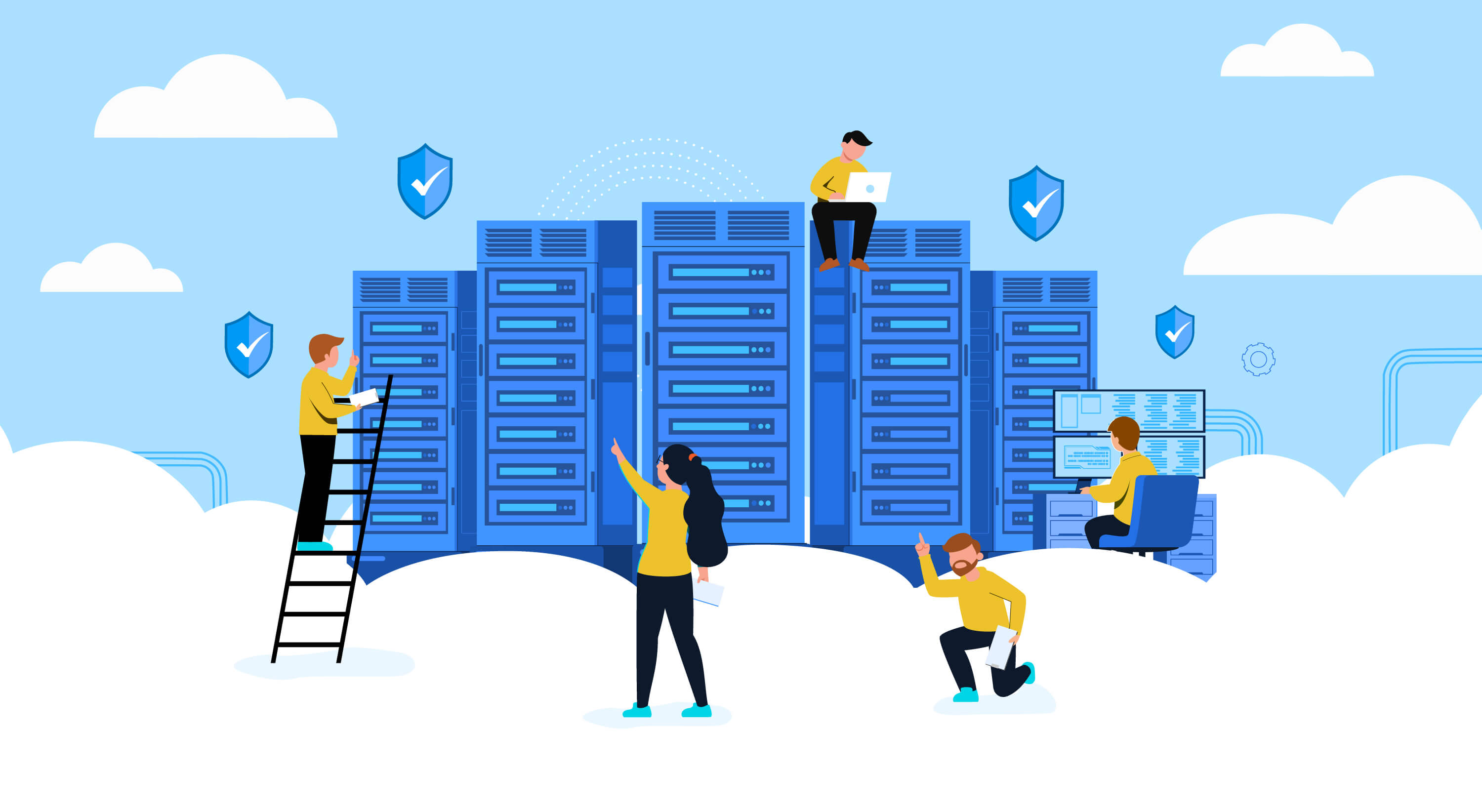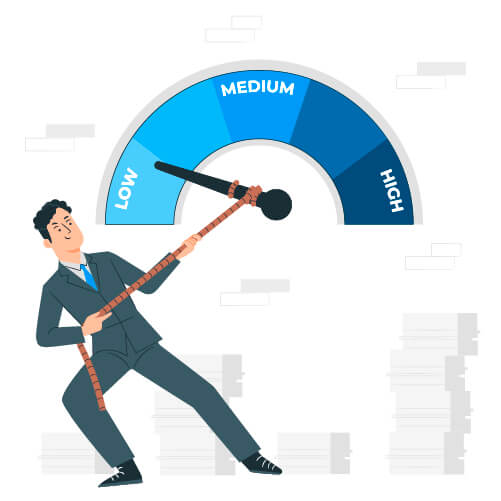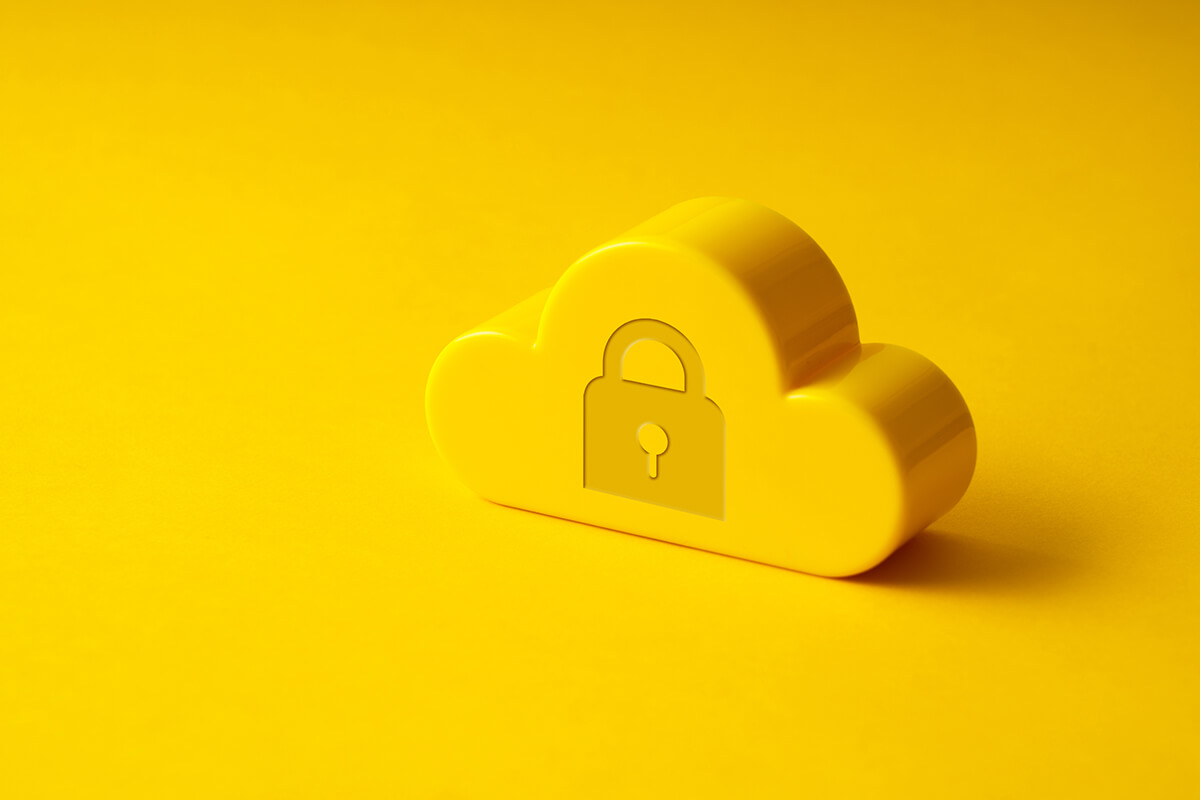Storing data in the cloud offers unparalleled flexibility and scalability. But with great power comes great responsibility, and that's where a cloud data protection comes into play.
We're here to guide you through the essential steps to safeguarding your sensitive information in the cloud and help you understand just how important cloud security services are.
By implementing rock-solid security measures, organizations can shield themselves from the risks lurking in cloud environments. It's all about crafting a comprehensive plan that covers everything from strong authentication and encryption to top-notch cloud data security software and continuous monitoring.

What is cloud security?
Cloud security refers to the methods and tools used to protect data and applications stored, processed, and transmitted in cloud environments. Picture cloud computing as a vast network of servers, databases, and software accessible over the internet.
As more businesses move their operations to the cloud, the importance of safeguarding data becomes critical. Cloud security involves various strategies and technologies aimed at ensuring the confidentiality, integrity, and availability of data. It’s not just about regular data protection anymore, it’s also about focused cloud data protection.
A vital aspect is information protection, which focuses on implementing measures to keep data safe throughout its lifecycle in the cloud. In essence, cloud data protection is about ensuring that data hosted in cloud environments is protected from unauthorized access, data breaches, and other security threats. We’ll discuss specific steps organizations can take to protect their data in the cloud below.

Risks associated with storing data in the cloud
Based on IBM’s Cost of a Data Breach Report, 82% of breaches in 2023 involved data stored in the cloud. We’ll let that sink in for a moment…
By implementing robust security measures and adhering to best practices, organizations can mitigate risks and protect their most valuable asset—their data.
So, let’s talk about why cloud data protection matters in more detail:
- Data breaches: Weak access controls, misconfigurations, and vulnerabilities in cloud infrastructure can lead to unauthorized access and data breaches. Attackers exploit these weaknesses to gain unauthorized access to sensitive data stored in the cloud.
Examples of data breach scenarios include unauthorized access to cloud storage buckets, exploitation of misconfigured permissions, and compromised user credentials leading to unauthorized data access or exfiltration.
- Data loss and corruption: Malware, human error, hardware failures, and software errors can result in the loss of critical data stored in the cloud. Without aadequate backup and recovery measures, organizations risk permanent data loss and operational disruptions.
Examples of data loss and corruption scenarios include accidental deletion of critical data, software bugs, and cyber attacks such as ransomware encrypting data stored in cloud storage.
- Compliance violations: Non-compliance with regulatory requirements can lead to severe legal and financial consequences. Failure to protect sensitive information, maintain data privacy, and adhere to data retention policies can result in regulatory fines, legal penalties, and reputational damage.
Examples of compliance violations and legal implications include unauthorized access to personally identifiable information, failure to comply with data protection laws such as GDPR, and exposure of confidential or proprietary data leading to lawsuits and litigation.
Additionally, organizations operating in regulated industries must adhere to specific data protection laws and industry standards. For example, healthcare organizations must comply with the HIPAA, while financial institutions must adhere to the PCI DSS.
Data breaches can have far-reaching consequences, especially in today's world where news of a data breach spreads swiftly, eroding customer confidence and loyalty. And those are tough – sometimes even impossible – to gain back. For many businesses, a data breach can mark the beginning of their downfall.
What types of data do businesses store in the cloud and why?
In the cloud, sensitive data covers various information assets that hold value and need safeguarding from unauthorized access, disclosure, and manipulation. Common types of sensitive data stored in the cloud include:
- Financial records: Client credit card information, banking transactions, and financial statements are sensitive financial data that must be protected to prevent fraud and financial loss. Data loss incidents in the financial industry are some of the costliest out there at USD 5.9 million per data breach (based on IBM’s 2023 Cost of a Data Breach Report).
- Customer information: Personally identifiable information (PII), including names, addresses, phone numbers, and email addresses, is commonly stored in the cloud by organizations across various industries from manufacturing and automotive to education and government.
- Intellectual property: Trade secrets, patents, copyrights, and proprietary business information represent valuable intellectual property assets that require protection against theft and unauthorized disclosure.
- Health records: Electronic health records, medical histories, and patient diagnoses contain sensitive health information protected by healthcare privacy regulations such as HIPAA. The particularly sensitive nature of this information makes data breaches in the healthcare industry by far the most expensive out of any industry: USD 11 million per data breach!
- Legal documents: Contracts, agreements, and legal correspondence may contain sensitive legal information subject to attorney-client privilege and confidentiality requirements.
Businesses choose to store sensitive data in the cloud for various reasons, ranging from scalability and accessibility to cost-effectiveness and operational efficiency. Cloud storage solutions provide flexible storage options and universal access to data from any device or location, empowering organizations to streamline operations, foster collaboration, and cut infrastructure expenses. However, it's crucial to balance the convenience and perks of cloud storage with robust security measures to counter the inherent risks linked with storing sensitive data in shared, multi-tenant cloud environments.

Understanding the cloud data lifecycle
Data in motion refers to data that is actively being transmitted between devices, networks, or systems. Examples include emails, file transfers, and real-time communications such as video conferencing.
Encryption protocols such as TLS and SSL are commonly used to secure data in motion by encrypting communication channels between clients and servers. HTTPS encrypts web traffic to protect sensitive information transmitted over the internet, including login credentials and financial transactions.
Data at rest pertains to information that resides in storage repositories or databases and remains inactive until accessed by authorized users or applications. Examples include files stored on servers, databases, and cloud storage platforms.
Disk encryption solutions encrypt data at rest to protect sensitive information stored on hard drives or storage devices. Stored data is safeguarded by encrypting files, databases, or entire storage volumes to prevent unauthorized access.
Data at use is information that is actively being processed or accessed by users or applications. Examples include data accessed by users in web applications, databases queried by applications, and files opened by users for editing or viewing.
Application-level encryption techniques, such as database encryption and file-level encryption, can protect data at use by encrypting sensitive information within applications or databases. Access controls and authentication mechanisms restrict user access to data based on predefined permissions and roles.
Cloud security: A shared responsibility model
Cloud security is often misunderstood, with many believing that cloud service providers (CSPs) shoulder all responsibility for securing data and applications in the cloud. However, the reality is quite different. Cloud security operates on a shared responsibility model, where both CSPs and cloud customers, like your business or organization, play crucial roles in implementing security controls. This is how:
CSP responsibilities
Maintenance of cloud infrastructure, including data centers, networks, servers, and storage systems by implementing the following:
- Network security: Network segmentation, firewalls, intrusion detection and prevention systems, and distributed denial-of-service (DDoS) protection to safeguard cloud networks and infrastructure from unauthorized access.
- Data encryption: CSPs offer data encryption capabilities to encrypt data at rest and in transit.
- Identity and access management (IAM): IAM solutions enable organizations to manage user identities and implement authentication mechanisms such as multi-factor authentication to prevent unauthorized access to cloud resources.
- Compliance and certification: CSPs adhere to industry standards and regulatory requirements, undergo regular security assessments and audits, and obtain certifications such as ISO 27001, SOC 2, and GDPR compliance to demonstrate their commitment to security and compliance.
Customer responsibilities
Securing data and applications within the cloud environment. This includes implementing DLP solutions, access controls, encryption, and internal data security policies and employee education on the topic of protect sensitive information from unauthorized access or disclosure.
Did you know?
Another common misconception is that cloud environments are less secure than on-premises infrastructure. While cloud environments introduce unique challenges like shared responsibility, multi-tenancy, and dynamic scaling, they also offer robust security features and controls. Safetica's own cloud-based intelligent data security solution, Safetica, is a testament to our belief in cloud security!
Next, we’ll get into best practices that your organization can take on to effectively play its part in cloud data protection.
7
best practices
for cloud data protection
When it comes to safeguarding sensitive information stored, processed, and transmitted in the cloud, an effective cloud data security strategy involves a blend of components and measures. By following these best practices, you're not just preventing potential data breaches; you're also laying the groundwork for success and ensuring the safety of your data assets:
1.
Implementing strong authentication and access controls
Implementing strong authentication mechanisms, such as multi-factor authentication, role-based access controls, and the Zero Trust Approach helps prevent unauthorized access to cloud resources.
Culprits: Weak passwords, stolen credentials, and insider threats
While strong authentication is crucial, relying solely on it will not provide sufficient protection against advanced threats. It's essential to complement authentication with other security measures, such as encryption and continuous monitoring.
2.
Encrypting data both in transit and at rest
Encrypting data ensures that even if unauthorized parties intercept it, they cannot read or misuse it without the appropriate decryption key. Organizations should employ encryption techniques such as data-at-rest encryption, data-in-transit encryption, and end-to-end encryption to protect data at all stages of its lifecycle in the cloud.
Culprits: Man-in-the-middle attacks, data interception during transmission, and unauthorized access to stored data
While encryption provides robust protection, it should be part of a comprehensive security strategy that includes access controls, data classification, and regular security assessments.
3.
Utilizing cloud security services and DLP solutions
Cloud security services offer specialized solutions designed to address the unique security challenges of cloud computing. These services include cloud-native security tools, threat intelligence platforms, and security incident and event management systems.
Data Loss Prevention (DLP) solutions play a critical role in preventing data leaks and unauthorized disclosures by monitoring, detecting, and enforcing security policies on sensitive data in the cloud.
Dedicated DLP solutions, such as Safetica, offers advanced capabilities for identifying, monitoring, and protecting sensitive data across cloud environments.
Culprits: Data leakage, compliance violations, and insider threats
While some cloud platforms offer integrated DLP features, dedicated DLP software is the superior option, providing comprehensive coverage and customization options.
Tip: With Safetica, our cloud-based DLP solution, organizations can protect their data in the cloud while enjoying the flexibility of cloud-based deployment.
4.
Integration of cloud access security broker (CASB) solutions
CASB solutions act as intermediaries between users and cloud services, providing visibility, control, and security for cloud applications and data. CASBs facilitate secure cloud adoption by enforcing security policies, detecting and mitigating cloud security threats, and ensuring compliance with regulatory requirements.
Culprits: Lack of visibility into cloud application usage, difficult to maintain consistent policy enforcement across cloud environments, compliance concerns, require internet connection
Key features of CASB solutions include cloud application discovery and assessment, data protection controls, user activity monitoring, and threat intelligence integration. But due to the limitations of CASBs, it is necessary to combined the CASBs functionality with endpoint DLP to provide complete protection against data leakage.
5.
Regularly monitoring and auditing cloud environments
Continuous monitoring and auditing of cloud environments help detect and respond to security incidents and policy violations promptly. Organizations should conduct periodic penetration testing, vulnerability assessments, and security audits to assess the security posture of their cloud infrastructure and applications.
Culprits: Unauthorized access, data breaches, and configuration errors
While monitoring tools provide valuable insights into cloud security, organizations should also prioritize proactive threat hunting, incident response planning, and security automation to mitigate risks effectively.
6.
Enable visibility across multi-cloud environments
Unified visibility allows organizations to gain a holistic view of their cloud infrastructure, applications, and data across different deployment models.
Culprits: Shadow IT, unauthorized cloud usage, and misconfigured cloud resources
While adopting a multi-cloud strategy offers flexibility and scalability, it also introduces complexity and security challenges. Unified visibility tools enable organizations to centrally manage security policies, access controls, and compliance requirements across diverse cloud environments.
7.
Training employees on cloud security best practices
Employee training and awareness programs play a crucial role in fostering a security-conscious culture and reducing the risk of human error and insider threats.
Culprits: Phishing attacks, social engineering, and negligent or uninformed employees
While technological solutions provide essential security controls, human error remains a significant risk factor. Regular training sessions, simulated phishing exercises, and security awareness campaigns help educate employees about potential threats and best practices for safeguarding sensitive data.
By integrating these best practices into your cloud data protection efforts, you can enhance your organization's security posture and fortify your data against evolving threats, ensuring robust protection in today's dynamic digital landscape.

Safetica – your trusted partner in cloud data protection
Navigating the landscape of cloud data protection demands a reliable partner you can count on. Safetica stands ready to be that ally, offering a suite of dedicated Data Loss Prevention (DLP) solutions designed to kick your cloud security posture up a notch.
At Safetica, we understand the nuances of cloud environments. Our sophisticated intelligent data security solution powered by contexual defence offers access controls, encryption, and real-time monitoring to safeguard your data at every stage of its journey.
Choose Safetica for:
- User-friendly deployment: Our solutions are designed for easy implementation, minimizing compatibility issues and providing swift deployment across your existing IT infrastructure.
- Persistent data security: Safetica's persistent data classifications resist attempts to bypass DLP, extending protection even to archived or encrypted files.
- Comprehensive Protection: Safetica's cloud data security solutions offer comprehensive protection, ensuring that your sensitive data remains confidential, integral, and available throughout its lifecycle in the cloud.
- Flexible options: Tailor your security strategy with Safetica's flexible deployment options, whether you prefer on-premise installation for maximum control or cloud-based hosting for enhanced flexibility and scalability.
With Safetica, you gain more than just security; you gain peace of mind. You risk nothing with our free trial.
